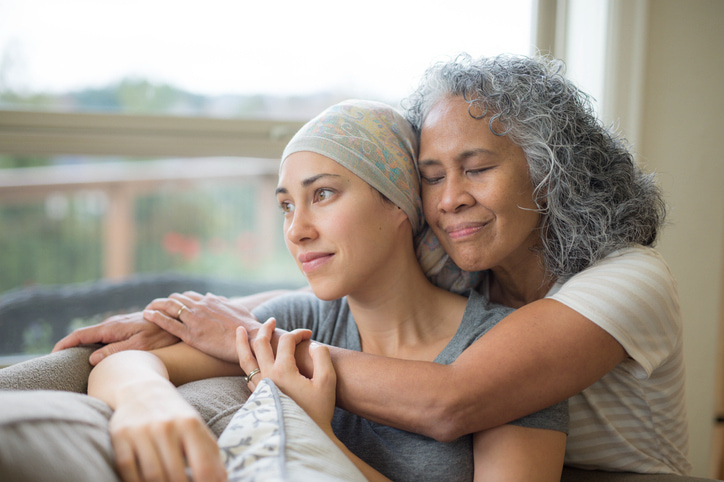Infusion therapy is a pivotal part of cancer care, delivering the medications your body needs to fight the disease or manage its symptoms. However, the treatment process can come with side effects that might feel overwhelming at times, both physically and emotionally.
This blog is your guide to understanding what to expect and how to manage these side effects, so you can feel more in control of your cancer treatment journey. If you or someone you love is undergoing infusion therapy, this article will help make the process a little easier and bring awareness to valuable resources that can improve the overall experience.
What Is Infusion Therapy?
Infusion therapy involves administering medications or fluids directly into the bloodstream, typically through an IV. It's a common cancer treatment, allowing doctors to deliver chemotherapy, immune-boosting drugs, hydration, or pain management medications effectively.
While highly effective, it can also cause side effects due to the aggressive nature of the medications.
Understanding Side Effects of Infusion Therapy
Side effects vary from person to person. Some may experience mild discomfort, while others find them more challenging. Below are some common side effects:
Physical Side Effects
- Fatigue: A frequent symptom that can impact daily life.
- Nausea and Vomiting: Certain medications may cause gastrointestinal discomfort.
- Hair Loss: Chemotherapy drugs often lead to temporary hair loss.
- Weakened Immunity: Increased risk of infections.
- Skin and Nail Sensitivity: Changes such as dryness or discoloration.
Emotional and Mental Side Effects
- Anxiety and Stress: Fear of the unknown can be overwhelming.
- Depression: Lifestyle changes and treatment impacts may lead to sadness.
- Body Image Concerns: Changes such as hair loss can affect self-perception.
Managing Physical Side Effects
Combat Fatigue with Rest and Nutrition—Give your body the rest it needs. Eat high-energy foods like lean proteins, complex carbs, and fruits. Gentle exercise, like short walks, can also help.
Alleviate Nausea—Ask your doctor about anti-nausea medications. Ginger tea and small, bland meals like crackers and broths may help. Avoid rich or spicy foods.
Protect Your Immune System—Practice good hygiene by washing your hands regularly and avoiding crowded spaces where infections may spread. A nutrient-rich diet with immune-boosting foods like citrus and leafy greens is key.
Care for Your Skin and Nails—Use hypoallergenic lotions to keep your skin hydrated, and be gentle with your nails to avoid damage. Wearing sunscreen when outdoors can prevent sensitive skin from further irritation.
Prepare for Hair Loss—To prepare for hair loss, consider purchasing a wig or headscarf in advance. Many patients also find comfort in joining support groups.
Coping with Emotional Side Effects
Practice Mindfulness and Relaxation Techniques—Deep breathing, meditation, and yoga can reduce stress. Even a few minutes of mindfulness daily can help.
Seek Professional Support—A counselor or therapist specializing in cancer care can help you process your emotions and develop coping tools. Don’t be afraid to reach out for support.
Build a Positive Body Image—If body image concerns arise, try focusing on the things your body is capable of instead of its visible changes. Exploring scarves, wigs, or other styling options can also help you feel more comfortable and confident.
Lean on Loved Ones—Friends and family can provide emotional comfort and practical assistance. Sharing your thoughts with them can make a difference.
Rely on Support Systems and Resources
Build Your Support Network—Joining a cancer support group—in person or online—can provide understanding and connection. Shared stories and advice create a sense of belonging and help normalize your emotions.
Utilize Professional Resources—Centers like Astera Cancer Care offer comprehensive patient support, including oncology services, social work, and palliative care.
Infusion Therapy FAQ
What does an infusion do to your body?
An infusion delivers medications or nutrients directly into the bloodstream, ensuring targeted therapy. The infusion rate is adjusted for maximum effectiveness.
What are the problems with infusion therapy?
Side effects may include allergic reactions, such as itching, swelling, or anaphylaxis, and a risk of infection at the catheter site.
How long do infusion side effects last?
Side effects vary but typically resolve within hours to a few days. If they persist, consult your doctor.
How do you feel after infusion therapy?
You may feel fatigued or experience mild discomfort. Any significant changes should be discussed with your care team.
What not to do after an infusion?
Avoid strenuous activities and extreme temperatures on the infusion site. Follow-up appointments are crucial for monitoring reactions.
Astera Cancer Care is Here to Help
Astera Cancer Care provides infusion therapy, hematology, palliative care, and personalized support for patients and families. With locations across New Jersey and Pennsylvania, we make high-quality, compassionate care accessible.
Start your healing journey with Astera Cancer Care—book an appointment today.

